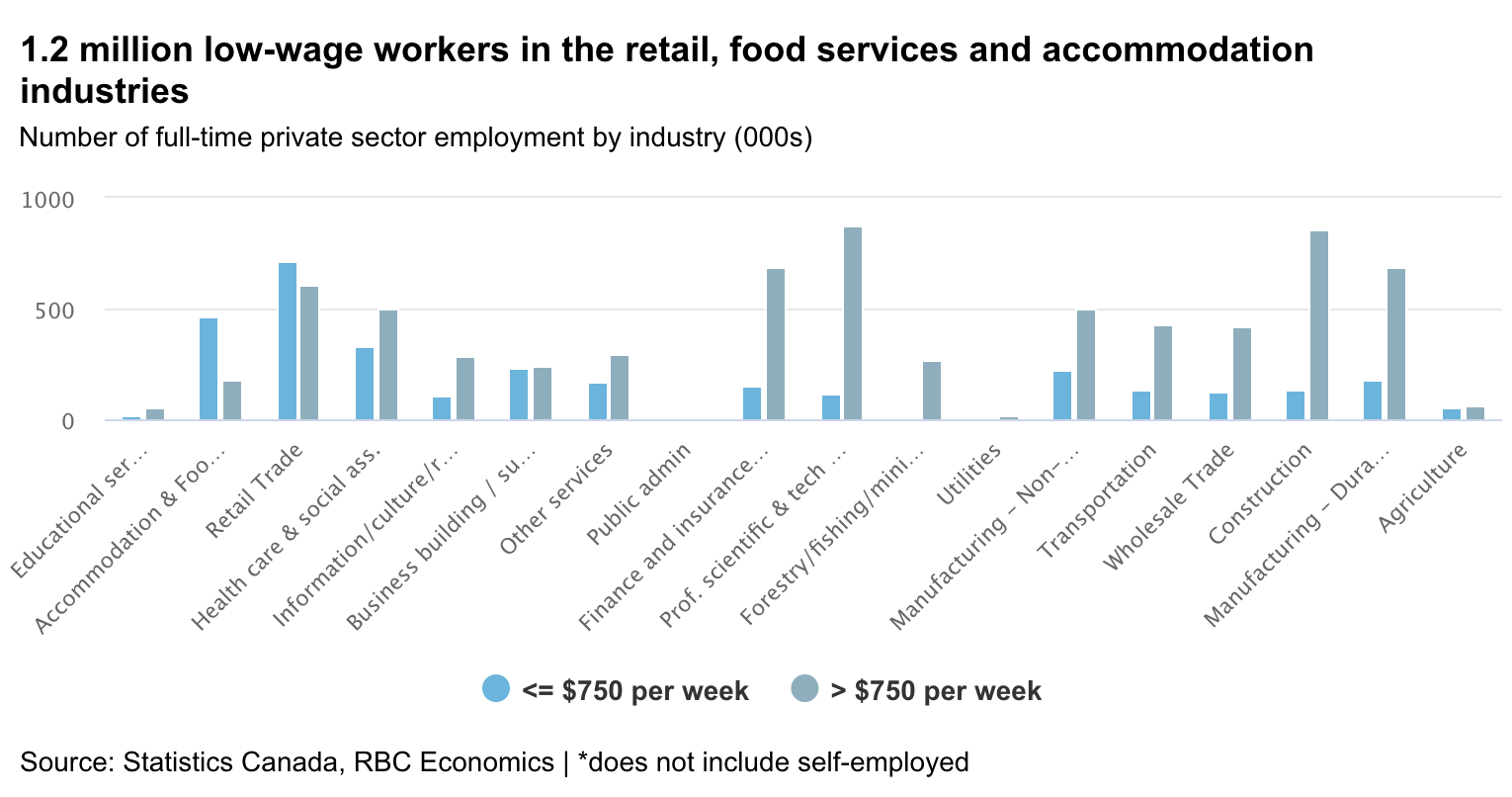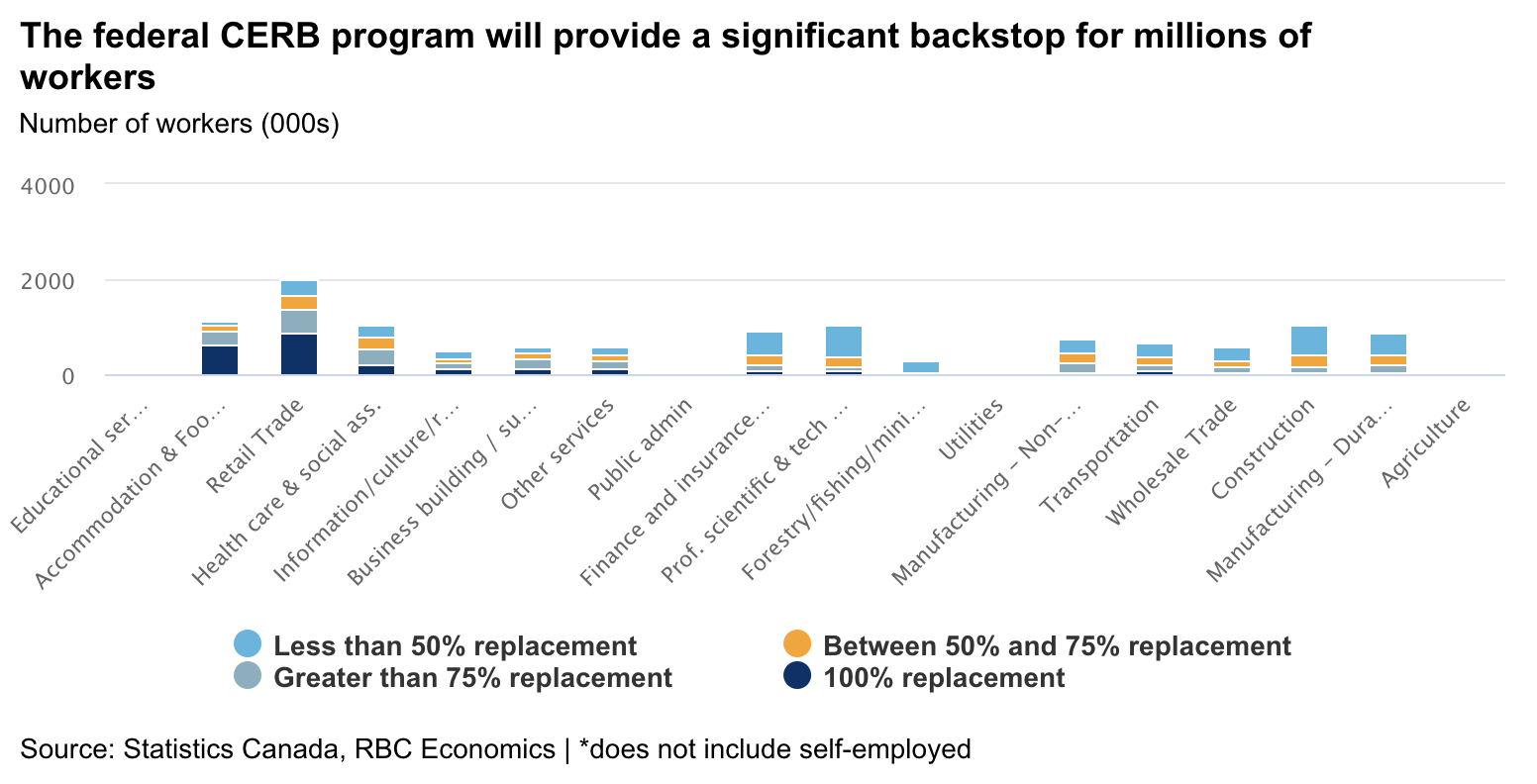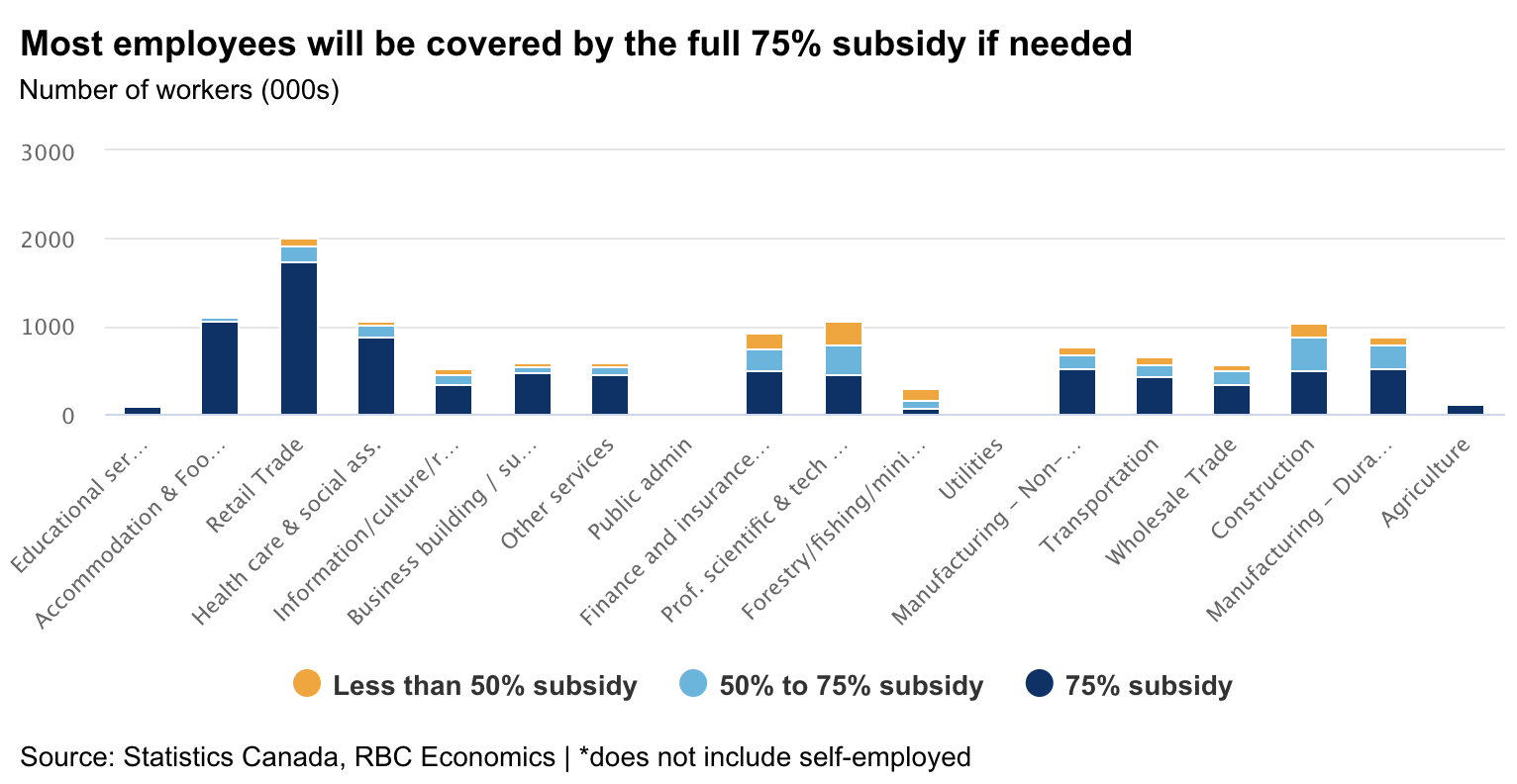About a fifth of our projected sharp decline in Q2 GDP is coming from the retail, accommodation and food services sectors (see Canada’s Economy Enters Uncharted Waters) that employ 1.2 million full-time, low-wage workers. Already we are seeing evidence of these workers being hit: a recent examination of job posting data by Indeed showed a 30% to 40% decline in Food Preparation & Services and Hospitality & Tourism job ads compared to last March. And a recent survey from the C.D. Howe Institute suggests lower income households are getting hit the hardest, with nearly 50% of households making below $50,000 a year losing hours or wages.
These workers tend to be younger and have lower levels of education that limit their ability to find other sources of income even during good times, as we discussed in our recent report COVID-19’s Threat to Canada’s Vulnerable Workers. During traditional recessions these workers typically see their unemployment rate spike to double or triple the national average. Recent announcements by the federal government expanding the employment insurance program through the Canada Emergency Response Benefit (CERB) may provide some relief. For many of these low income workers, the $2,000/month income flow may fully replace or even exceed lost wages. Furthermore, the announced 75% wage subsidy should go some distance to maintaining employer-employee relationships, making it easier for workers to return once activity ramps back up.
Low-wage workers may be particularly hurt by this shock
The nature of the response to the COVID-19 shock, including social distancing and the closing of non-essential businesses, is disproportionately affecting services industries and smaller firms relative to past shocks. This is negatively impacting low-wage workers (defined here as earning less than $750 per week—33rd percentile of full-time weekly earnings in 2019) employed in retail and accommodation and food services industries. These industries account for 37% of all private sector employment (not including the self-employed) that earn less than $750 per week.

Holding the line
The federal government has introduced relief for both workers and business owners through two large-scale programs: the Canada Emergency Response Benefit (CERB) and a 75% wage subsidy for businesses whose revenues have fallen more than 30%, to a maximum of $847 per week per employee.

These tools will provide direct relief to workers who have lost their jobs, have become sick with COVID-19, or have to take care of family. Over 40% of retail workers and more than 50% of workers in the accommodation and food services industries will be eligible to receive 100% of their typical weekly earnings through the CERB program.
And for those businesses that are struggling to pay their workers in the face of steep revenue declines, the wage subsidy will likely cover the full 75% of their pre-crisis earnings for a large portion of their workforce. This will be especially important for restaurants providing takeout, pet food and grocery stores, pharmacies, and other essential service businesses that remain open. The program will also support firms such as those providing professional services that may still be open with employees working from home but are experiencing steep declines in revenue. Keeping businesses attached to their employees is going to be key to jump starting the economy once restrictions are lifted.
Must not overlook students
Finally, there has been little said about how these programs can help those students who intended to work this summer or enter the labour market for the first time upon graduation. While those who have earned $5,000 over the past 12 months may qualify for relief under CERB, many students still won’t meet this threshold. Given the costs already faced by new graduates during bad economic times, the lack of guidance from the federal government is concerning.
Andrew Agopsowicz is a Senior Economist working in both the Economics and Thought Leadership groups. He studies the labour market – largely focusing on the future of work, demographic change, diversity, and human capital. Before joining RBC, Andrew was a Senior Economist at the Bank of Canada.
This article is intended as general information only and is not to be relied upon as constituting legal, financial or other professional advice. A professional advisor should be consulted regarding your specific situation. Information presented is believed to be factual and up-to-date but we do not guarantee its accuracy and it should not be regarded as a complete analysis of the subjects discussed. All expressions of opinion reflect the judgment of the authors as of the date of publication and are subject to change. No endorsement of any third parties or their advice, opinions, information, products or services is expressly given or implied by Royal Bank of Canada or any of its affiliates.

